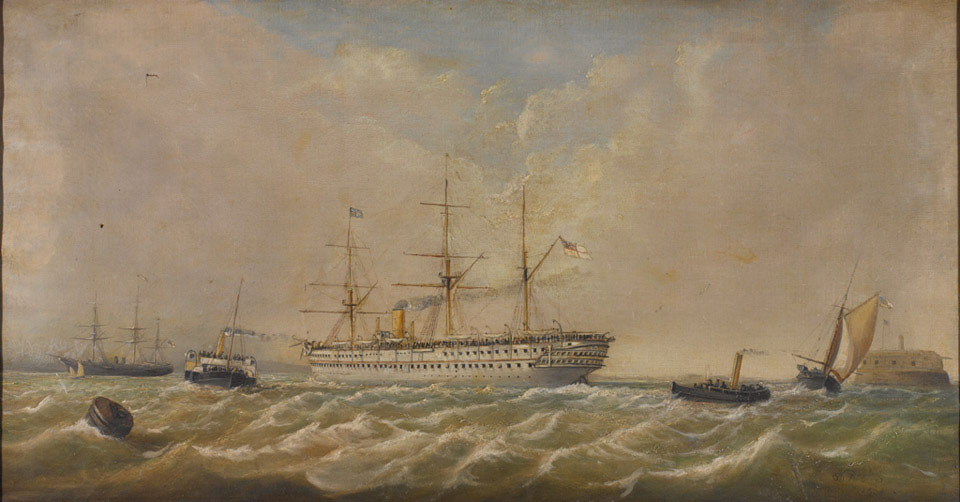
Online Collection
« Prev - 1 of 1 results - Next »
HM Troopship 'Crocodile', in the Spithead Channel, 1880
Oil on canvas by Henry Robins (1820-1892), 1880.
This painting shows the Crocodile in a choppy sea with other boats. The Fort overlooking the Spithead Channel, possibly Fort Gilkicker, is on the extreme right.
The Crocodile and her four sister-ships were constructed in 1866 to transport troops to and from India through the Suez Canal which was then under construction. They remained in service for about 30 years. The five vessels were each distinguished by a different coloured riband around the hull (yellow for Crocodile), and each carried the Star of India painted on her bow, which are both clearly visible in this picture.
Before the opening of the canal in 1869, passage to or from India could take months, either by sea round the Cape of Good Hope or by the overland route across Egypt. Through the canal, the journey from Bombay to Portsmouth was reduced to a matter of weeks. The Crocodile could transport a full battalion of infantry with its families, or about 1,200 people. When first built, the troopships set a new standard in accommodation for the Army and its families, but they soon fell behind merchant vessels in standards of space and comfort.
NAM Accession Number
NAM. 2001-04-330-1
Copyright/Ownership
National Army Museum, Out of Copyright
Location
National Army Museum, Study Collection
Object URL
https://collection.nam.ac.uk/detail.php?acc=2001-04-330-1

